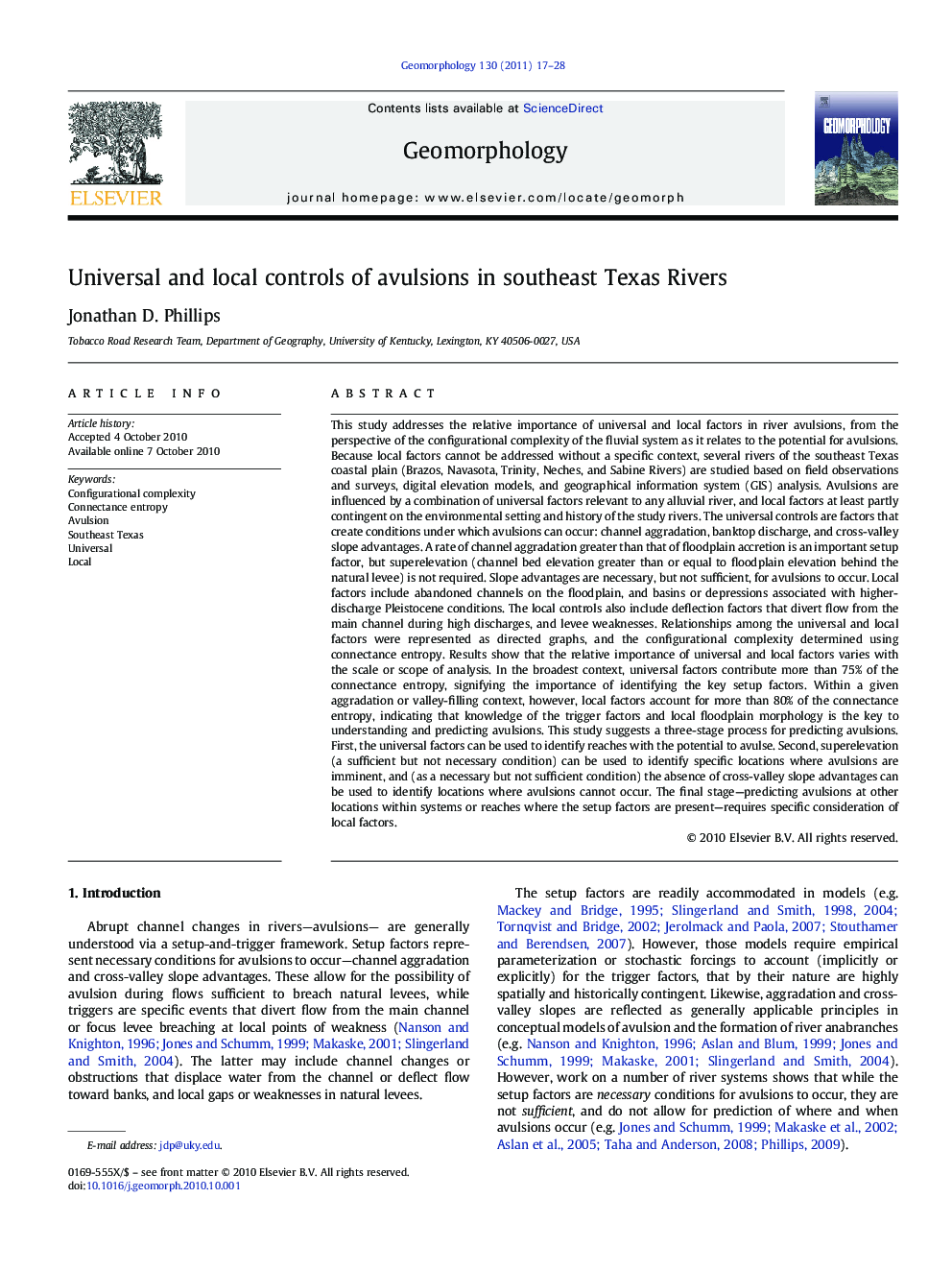| کد مقاله | کد نشریه | سال انتشار | مقاله انگلیسی | نسخه تمام متن |
|---|---|---|---|---|
| 4685586 | 1635501 | 2011 | 12 صفحه PDF | دانلود رایگان |

This study addresses the relative importance of universal and local factors in river avulsions, from the perspective of the configurational complexity of the fluvial system as it relates to the potential for avulsions. Because local factors cannot be addressed without a specific context, several rivers of the southeast Texas coastal plain (Brazos, Navasota, Trinity, Neches, and Sabine Rivers) are studied based on field observations and surveys, digital elevation models, and geographical information system (GIS) analysis. Avulsions are influenced by a combination of universal factors relevant to any alluvial river, and local factors at least partly contingent on the environmental setting and history of the study rivers. The universal controls are factors that create conditions under which avulsions can occur: channel aggradation, banktop discharge, and cross-valley slope advantages. A rate of channel aggradation greater than that of floodplain accretion is an important setup factor, but superelevation (channel bed elevation greater than or equal to floodplain elevation behind the natural levee) is not required. Slope advantages are necessary, but not sufficient, for avulsions to occur. Local factors include abandoned channels on the floodplain, and basins or depressions associated with higher-discharge Pleistocene conditions. The local controls also include deflection factors that divert flow from the main channel during high discharges, and levee weaknesses. Relationships among the universal and local factors were represented as directed graphs, and the configurational complexity determined using connectance entropy. Results show that the relative importance of universal and local factors varies with the scale or scope of analysis. In the broadest context, universal factors contribute more than 75% of the connectance entropy, signifying the importance of identifying the key setup factors. Within a given aggradation or valley-filling context, however, local factors account for more than 80% of the connectance entropy, indicating that knowledge of the trigger factors and local floodplain morphology is the key to understanding and predicting avulsions. This study suggests a three-stage process for predicting avulsions. First, the universal factors can be used to identify reaches with the potential to avulse. Second, superelevation (a sufficient but not necessary condition) can be used to identify specific locations where avulsions are imminent, and (as a necessary but not sufficient condition) the absence of cross-valley slope advantages can be used to identify locations where avulsions cannot occur. The final stage—predicting avulsions at other locations within systems or reaches where the setup factors are present—requires specific consideration of local factors.
Journal: Geomorphology - Volume 130, Issues 1–2, 1 July 2011, Pages 17–28